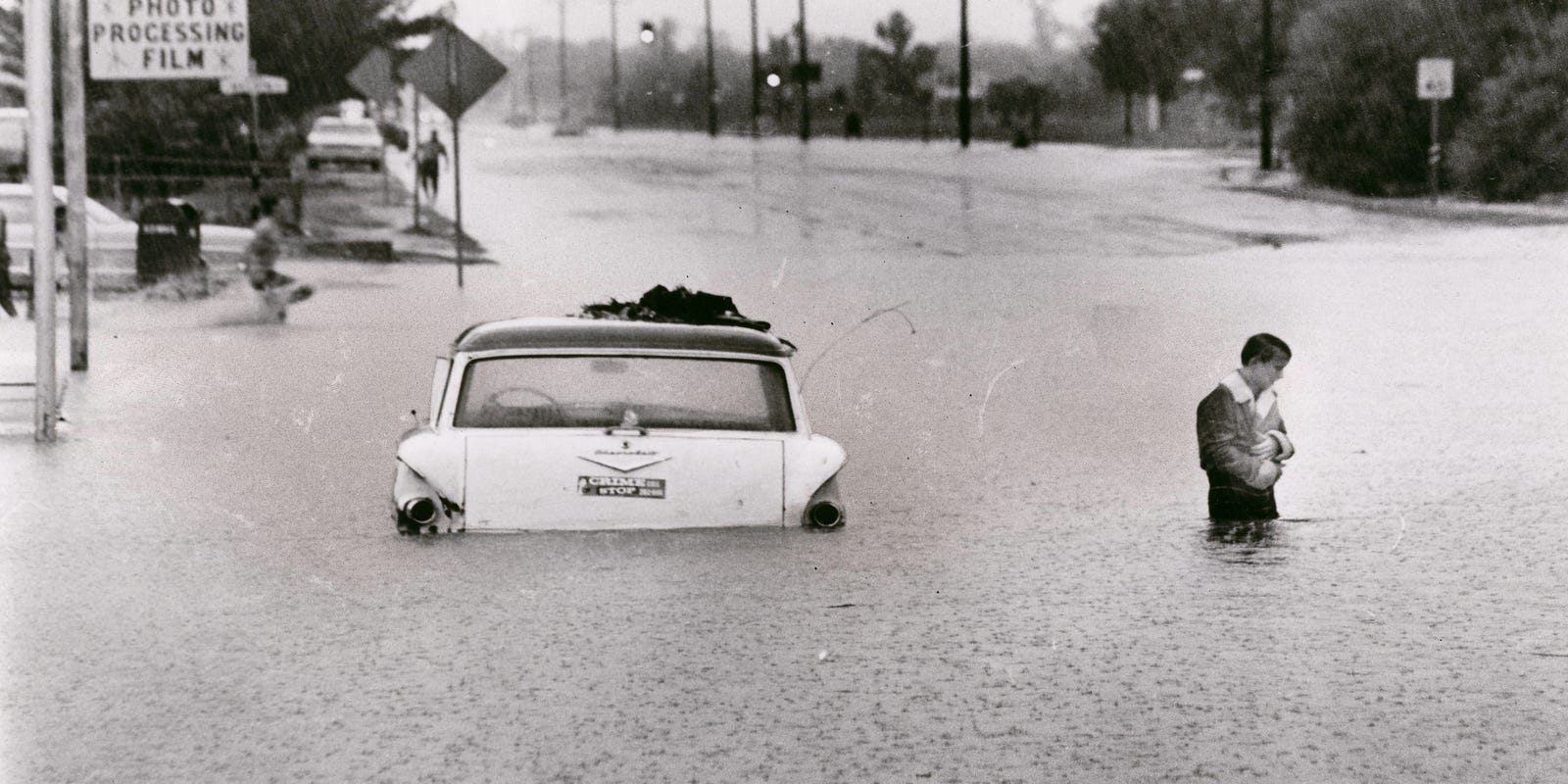Throughout the decades, Phoenix has consistently upheld its status as one of the fastest-growing cities in the United States. This trend was particularly notable in the 1970s when the city experienced a significant surge in population, nearly reaching a 50% increase. By 1979, the population of the Valley of the Sun had reached 2.6 million residents, marking a period of rapid expansion and transformation that was unfamiliar to many longtime inhabitants.
During this era, the Valley underwent notable changes, including a diversification of leadership, revelations of mafia influence within the state, and a burgeoning popularity of college football.
In the scorching desert landscape of the 1970s, metropolitan Phoenix resembled a disco inferno, showcasing a unique blend of developments and cultural phenomena that defined the city fifty years ago.
Surprising Recreational Activities
In the Arizona summer of the 1970s, water-based activities were a popular escape from the desert heat. Residents and visitors alike indulged in two main pastimes: floating down the Salt River and surfing artificial waves at Big Surf, the world’s pioneering inland surf park.
Prior to the introduction of shuttle services along the Salt River, people would flock in groups, bringing their own tubes and coolers of beer for a leisurely float downstream. It was common practice for groups to park a second vehicle at the river’s end, waiting to pick them up after their sun-soaked river adventure.
In 1969, Clairol sponsored the construction of Big Surf, a groundbreaking surfing facility that became an iconic summer destination in the Valley for almost five decades.
Political Milestones and ‘The Arizona Project’
The early 1970s in Arizona witnessed a series of historic political events, including the election of the first Hispanic governor, the appointment of Phoenix’s first female mayor, and the exposure of a significant corruption scandal that captivated the state.
In 1974, Raul Hector Castro made history by becoming Arizona’s 14th governor and the first Mexican-American to hold this esteemed position. Despite resigning two years later to serve as the U.S. Ambassador to Argentina, his legacy as a trailblazer endured.
Margaret T. Hance shattered gender barriers in 1975 when she assumed the role of Phoenix’s first female mayor. Her election not only signaled a milestone for women in leadership but also marked the end of the Charter Government Committee’s political dominance in city affairs.
The investigative journalism of an Arizona Republic reporter in 1976 uncovered widespread corruption and fraud, culminating in a groundbreaking collaborative effort known as ‘The Arizona Project.’ This initiative aimed to expose organized crime and political malfeasance in the state, leading to significant legislative actions and public awareness campaigns.
Architectural Marvels and Natural Disasters
The architectural landscape of Phoenix was forever altered with the completion of the Chase Tower in 1972, standing tall as the city’s tallest building. Originally named the Valley Center, this 40-story skyscraper by the Valley National Bank became a prominent fixture in downtown Phoenix, commanding the skyline at the intersection of Central Avenue and Van Buren Street.
Despite these advancements, the city also faced challenges from severe weather events, with devastating floods marking both the beginning and end of the decade. The Labor Day Flood of 1970, which deluged the city with 11 inches of rain in a single day, resulted in 23 fatalities. Subsequent floods, including a destructive winter flood in 1978, caused extensive damage, claiming lives and displacing thousands of residents across ten federal disaster-declared counties.
Sporting Triumphs on the Field
The 1970s heralded a golden era for football at Arizona State University, as the Sun Devils achieved unprecedented success on the gridiron. Their triumphs included winning the Western Athletic Conference title seven times by 1977 and producing over 100 players who went on to professional football careers. The decade commenced with a historic victory in the inaugural Fiesta Bowl game in 1971, where the Sun Devils defeated Florida State in front of a crowd of 51,098 spectators with a final score of 45-38.
